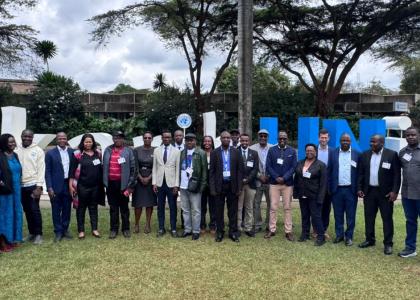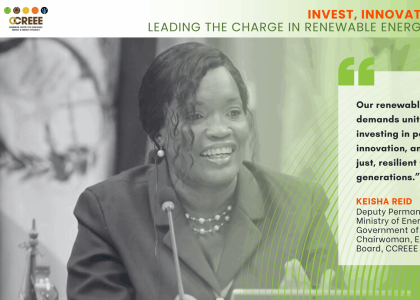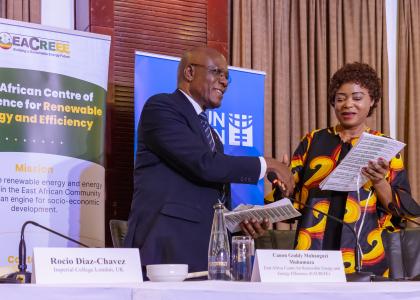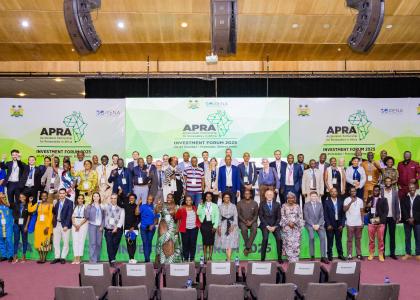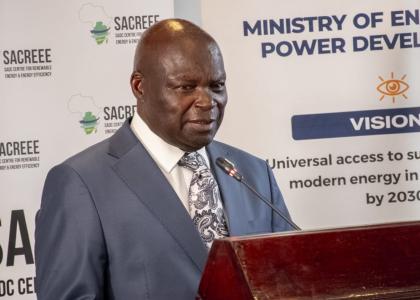By: Jean-Michel Parle and Jordon Hayles
The CCREEE’s IRRP programme continues in Belize, Guyana, and Trinidad and Tobago. Initial project schedules have been extended to account for several challenges experienced last year. These included the COVID-19 pandemic, several national elections and incidentally, more localized challenges related to the impact of various hazards across 2020.
Modelling now Underway
All three IRRPs are currently focused on modelling activities. In the IRRP methodology, the modelling of demand, the existing power system and possible future systems are core activities. In addition, the development and use of weather, climate and vulnerability models enhance our understanding of how risks to the systems may evolve over the study horizon and can help us to increase their resilience.
Demand can be modelled using top-down econometric techniques or bottom-up models of consumption activity, depending on the available data. Various software tools have been used to date but the CCREEE is currently using the Stockholm Environment Institute’s Low Emissions Analysis Platform (LEAP) and focuses on bottom-up approaches as far as possible.
Techno-economic models represent the technical characteristics, operational details and costs of today’s power system and future system scenarios – particularly on the supply side of the system. The operation of the current power system’s generation is first analysed through a generation dispatch model. From here, a capacity-expansion model is created to explore the development of the system under several future scenarios. These future systems are then simulated and analysed to ensure that their operation meets all requirements. The CCREEE’s IRRP employs Energy Exemplar’s PLEXOS software for these analyses. PLEXOS is an integrated modelling software
With these elemental models, one can simulate the generation, grid and load operation and their behaviour under various conditions. In this regard, one can also explore constraints and other issues that affect the reliability of the system. There is a link between the power system models and the previously identified techno-economic models. After analysis of the optimal system investments and dispatch of these future power supply assets, this data can be passed into the power system models for investigation on its adequacy to support these plans. The IRRP’s power system models are developed in DIgSILENT PowerFactory, a leading power system analysis software application for use in analysing generation, transmission, distribution, and industrial systems.
Further, within each of these models developed with LEAP, PLEXOS, and PowerFactory, the climate vulnerability elements will be included in the models through an iterative process to ensure the plan simulates climate events, among others, and their impacts on the power systems. This involves developing a risk mitigation and adaption plan that supports building greater resilience within the power system.
Country-specific updates
In Trinidad and Tobago (T&T), demand projection work is underway. An initial evaluation of submitted demand datasets and information has been conducted. The provided datasets are a solid foundation; the IRRP team is now exploring what further analysis can add value for stakeholders. The PLEXOS model for the existing system is currently under development and expected to be followed in quick succession by the development of the future scenarios identified by T&T’s major stakeholders. The initial power system grid model for the twin island state was recently completed and submitted to the Trinidad and Tobago Electricity Commission (T&TEC), for validation. Some early data to support the modelling of hazards present in T&T has been received, with more expected soon from both regional and local sources.
The initial data collection for Belize included some pre-existing hazard maps, and some historical data on hydrometeorological parameters.
For all three countries, additionally data collection from relevant regional organisations with responsibility for evaluation and analysis of hazards is also ongoing. New climate modelling runs will also shortly be undertaken with the support of the Caribbean Institute of Meteorology and Hydrology (CIMH) and Climate Studies Group Mona (CSGM) at UWI Mona, which is expected to support understanding of expected changes to the climate over the study horizon in the IRRPs.
Capacity Development in Full Stride
In addition to the work done to advance each country’s IRRP, several capacity building sessions were held by the CCREEE in Q1 2021 to build regional stakeholder capacity. These were capacity building sessions on Wind Resource Assessment, Hydropower Integration, Data Collection, PLEXOS models, Climate Vulnerability Modelling, Introduction to Grid Modelling, and Basic Grid Impact Studies.
For the CCREEE, capacity building is key as the Centre endeavours to impart skills and experiences which permit technical staff within regional utilities, regulatory bodies and ministries of energy to best support the region’s energy transition, resiliently. Engagement during the mentioned capacity development session was high, with significant questions asked and answered and hearty discussion. The sessions focusing on wind resource assessments and grid modelling were among the most popular.
The Basic Grid Impacts Studies capacity building sessions spanned two days with one country session per day. The aim of the session was to introduce participants from Guyana and Trinidad and Tobago to DIgSILENT PowerFactory and to exhibit the examination of scenarios most relevant to the energy transition. On the first day of the interactive capacity building session employees from Guyana Power and Light Inc. were engaged in the training and had the opportunity to experience the software by manipulating a model of the Guyana grid. On the second day of the training, members from T&TEC and the University of the West Indies (UWI), St. Augustine Campus explored the software on a generic grid model.
About the CCREEE IRRP Programme
Within the CCREEE’s Climate Resilience Strategic Programme, the Centre is undertaking the development of IRRPs for CARICOM Member States, as outlined above. These IRRPs are facilitated by kind financial support from the German Federal Ministry of Economic Cooperation and Development (BMZ), the European Union (EU), the Austrian Development Agency (ADA), the United Nations of Industrial and Development Organisation (UNIDO), the Kingdom of Spain through AECID, and technical support from the German Corporation for International Cooperation (GIZ), through the Climate Resilient and Sustainable Energy Supply (Cli-RES) Project.
The CCREEE also benefited from support to the IRRP Programme’s capacity development initiatives from the US Agency for International Development (USAID), through the National Renewable Energy Laboratory of the US Department of Energy (NREL).





